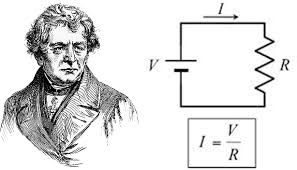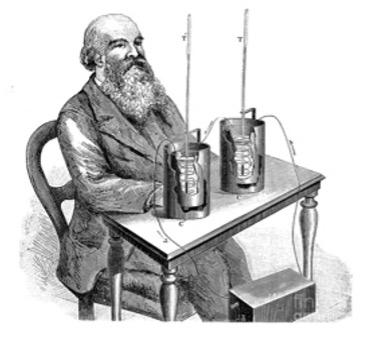Facts that led to InstaHeat
- Fabian Dietschi
- Oct 13
- 2 min read
Did you know…
Today, 9,900 active satellites orbit the Earth. Artificial Intelligence (AI), Virtual Reality (VR) and the Internet of Things (IoT) are used daily in our personal and professional lives – be it in the form of ChatGPT, virtual glasses, home security systems, cooling and heating systems, to name a few.
Yet, nothing has changed for over 200 years when it comes to heating liquids! We still pass energy (fire or electricity) through a metal surface which heats up and transfers heat to a liquid.
InstaHeat is revolutionizing this outdated process by removing the metal heating element entirely, offering a safer and more efficient solution for heating liquids.
A brief look at the science behind InstaHeat technology base.
Ohm’s Law determines electricity flow: In 1827, Georg Simon Ohm (left) formulated Ohm's law, a fundamental principle in electrical engineering and physics. According to this, the electric current flowing through a conductor is directly proportional to the voltage (pressure or push) between 2 points across it and inversely proportional to its resistance.
Joule’s Law explains how electricity turns into heat: Physicist James Prescott Joule (right) immersed a wire in water and allowed current to flow through it for 30 minutes. The water temperature increased, proving that electricity flowing through a material with some resistance generates heat. More current and higher resistance leads to more heat production. Joules established this in the 1840s.
Together, these principles underpin Joule’s or Ohmic heating technology, which converts electrical energy into heat by passing current through a conductor. Traditionally, this has been done through Indirect Ohmic Heating, where electricity flows through metal heating elements that transfer heat to liquids.
Call for Change
Indirect Ohmic Heating has several drawbacks, especially when metal heating elements are used. Take the example of a water boiler:
Dissipation - the movement of heat from its source into the surrounding environment. Even with the best insulation, water boilers lose 5-10% of their heat to the environment. This heat loss forces heating elements to stay on longer, consuming more energy and increasing operational costs over time.
Scaling - the deposition of minerals on the heating elements inside a boiler. As water heats, it holds fewer dissolved minerals, causing them to precipitate and form a hard layer. This reduces heat transfer efficiency, increases energy requirements and leads to increased maintenance over time.
Overheating - to counteract heat loss and scaling, elements often operate at higher temperatures, wasting energy and accelerating scaling, which shortens their lifespan.
High Maintenance Costs - frequent replacement of elements due to overheating and scaling drives up maintenance costs significantly.
Slow Heating Time - heating large volumes of water is often an inert process. Even Joule had to wait 30 minutes to see a significant heating effect when he immersed a wire in water. This slow and inert heating process persists in boilers today, where temperature changes occur with a noticeable delay.
InstaHeat promises to change all of that
InstaHeat is set to revolutionize liquid heating by removing traditional heating elements and addressing the inefficiencies and costs of existing systems. And how?
Stay tuned for further insights and updates from InstaHeat.












Comments